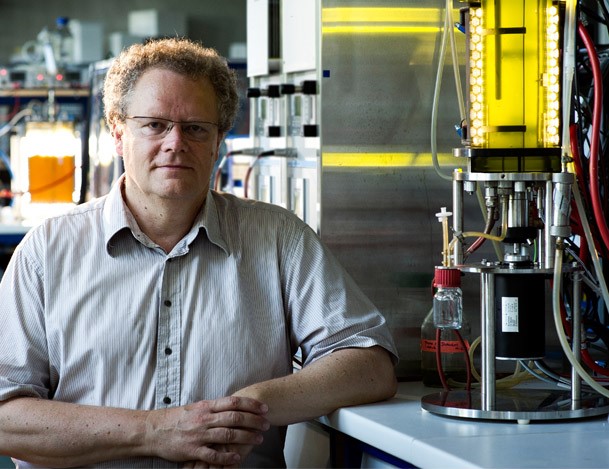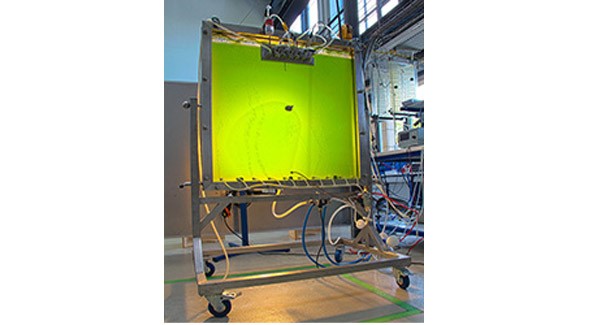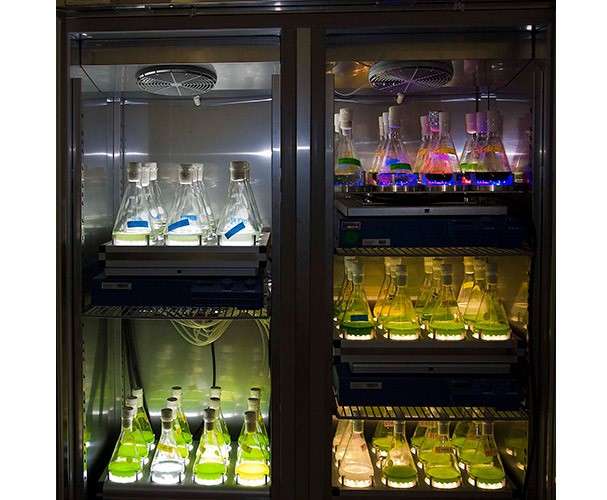How Clemens Posten and Klaus Slenzka want space travelers to breathe with algae oxygen in the future.
The longest manned space mission by an astronaut lasted 437 days: over a year in weightlessness under harsh conditions. When it comes to supplying the astronauts with oxygen, chemical tricks are used. Since there is almost no oxygen in space, oxygen has to be carried along or needs to be produced on site. But that's not all: To keep astronauts alive, it's important to remove exhaled carbon dioxide from the air and filter out toxins and impurities. Even the food supply is not entirely trivial.
Space travelers eat nutrient-enriched products that are sent along on the mission. Complex systems are being planned for life support on space stations that use microalgae for oxygen and hydrogen production, among other things. "Green algae build up biomass with the help of light energy, release oxygen and consume CO2," explains Prof. Clemens Posten from KIT. The bioengineer is very familiar with microalgae. He is researching how the green unicellular organisms can be used for energy production. Since April 2012, his know-how is also used for exploring new possibilities in space missions.
"Innovation is the transfer of scientific knowledge into applicable products."
In a team with other German researchers from Bochum and Bremen and the space technology company OHB System AG, Posten wants to develop an 'algae reactor' for research purposes in spacecraft on behalf of the German Aerospace Center (DLR), in which the useful single-celled organisms can be cultivated and integrated into a bioregenerative life support system. In addition to supplying oxygen, this reactor could also take on another task in the future: providing space travelers with additional nutrients as a food supplement.
However, the conditions in space pose major challenges for the researchers: "The reduced gravity affects the orientation of the cells and makes it difficult to transport substances and exchange heat, which are important for cell growth," says Posten. Another problem is the increased radiation in space, which could not only hinder the algae's growth but also damage them.
Ph. D. Klaus Slenzka is head of life sciences at OHB and is translating the scientific results into highly efficient individual products for space travel together with his colleagues. He sees the combination of an efficient multistage life support system and a sustainable ecophysiological approach as one of the greatest challenges: "We don't want to create a nuclear power plant on the moon, but rather produce oxygen and energy in a highly efficient regenerative way. A second step could be the production of food supplements. For a spacecraft with its special requirements and the very different physical parameters than on Earth, this development is very complex."
Although a preliminary design is already available for the photobioreactor, it will be some time before spacecraft launch into space with the new system. After initial experiments on Earth, scientists will test the photobioreactor system during flights on the Airbus A300 ZERO-G next September. Parabolic flight routes will repeatedly produce phases of weightlessness, which will provide initial insights for testing the bioreactor under space conditions. Once the algae have survived the parabolic flights, tests will follow on satellites or the International Space Station ISS.


